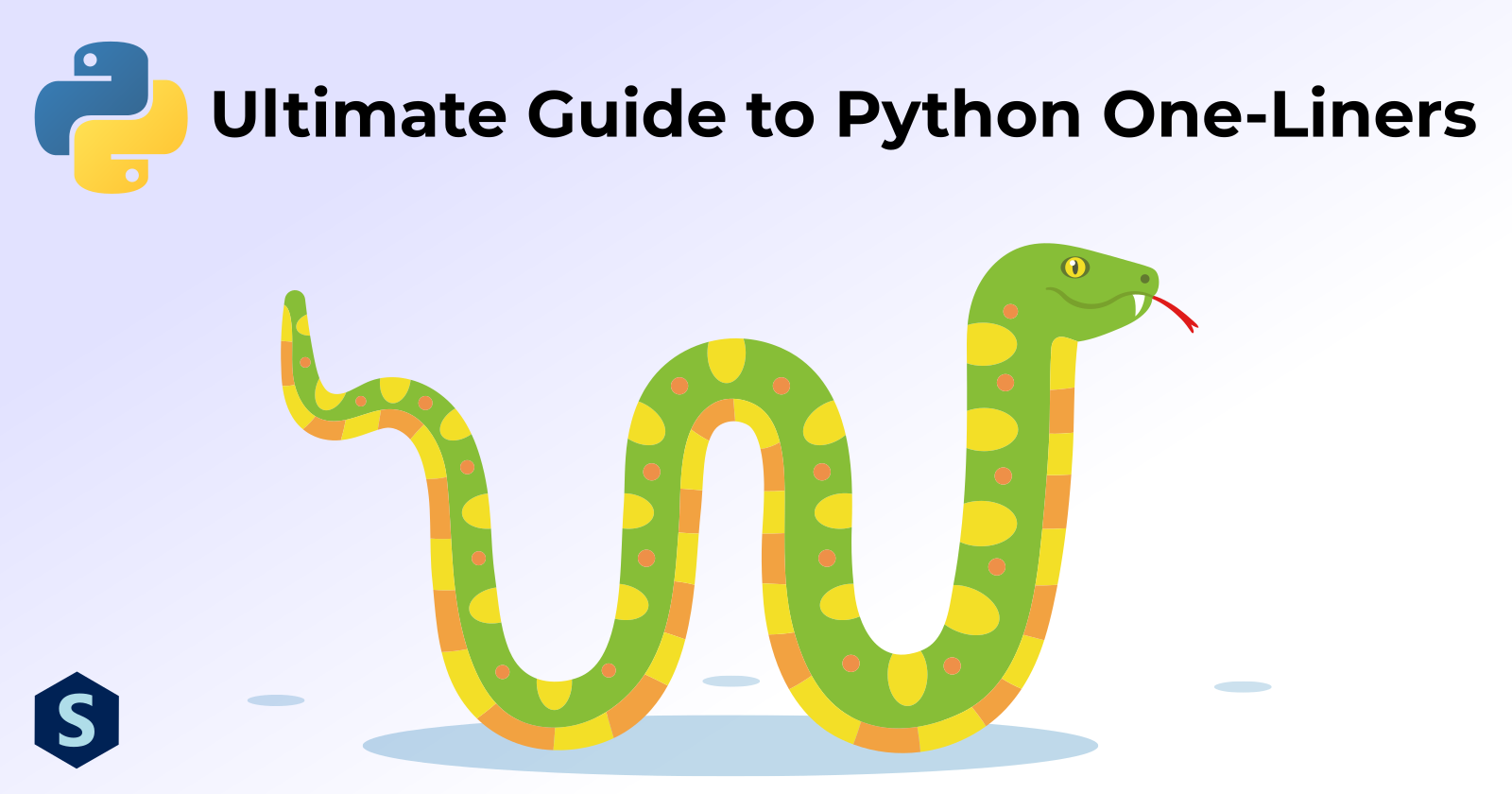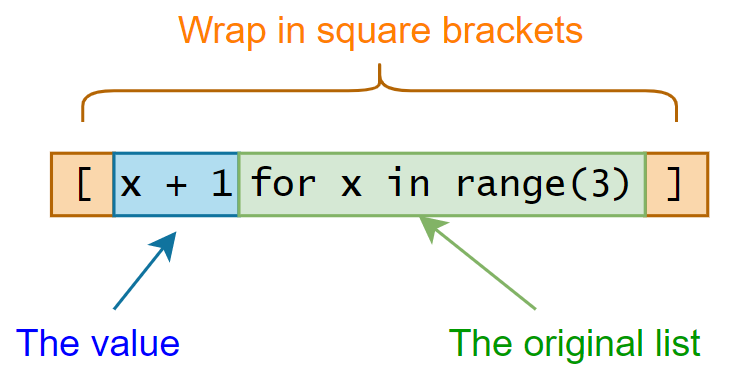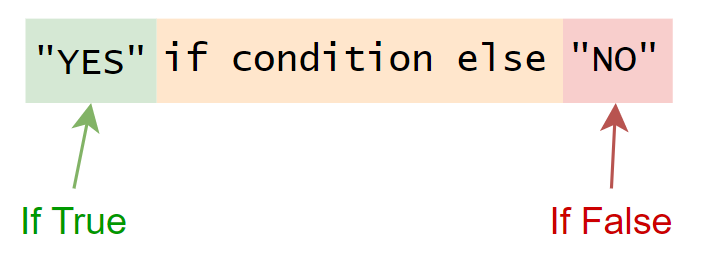Ultimate Guide to Python One-Liners
 Hoh Shen Yien
Hoh Shen Yien
Have you ever come across a fancy one-liner in Python that can do what supposedly 10-20 lines of code do?
Here's a simple example:
## Printing triangle in one-liner
height = 10
[print("".join(x)) for x in [[" " if i < k else "#" for i in range(height)] for k in range(height)]]
and the result:
##########
#########
########
#######
######
#####
####
###
##
#
Warning: Please don't use this for any real projects, they're cool but bad for eyes
Prerequisites
You don't expect to just learn it straight away....right?
List Comprehension
List Comprehension is a Syntactic sugar that helps Pythonistas to create a new list easily from existing values.
Here's an example to show the difference to create a list of increasing integers:
# Creating a list of [1,2,3,4,...n]
n = 10
## Using normal way
li = []
for i in range(n):
li.append(i + 1)
## Using List Comprehension
li = [i + 1 for i in range(n)]
I hope you'd agree with me that the second approach is shorter 😌
Overall, list comprehension consists of three parts:

Square Brackets - List comprehension creates lists, so we wrap them in square brakcets to make it a list.
The Value - This is the value you want to be in the list. You can call functions, or do simple operations, and the returned value will be in the list.
[x for x in range(3)] # [0, 1, 2] [i + 1 for i in range(3)] # [1, 2, 3] [j % 2 == 1 for j in range(3)] # [False, True, False] def randomFunction(value): return value + 10 [randomFunction(haha) for haha in range(3)] # [10, 11, 12]The original list - This is the source list, where its elements will be fed to the value.
You can imagine that in list comprehension, we are copying things from original list to new list. At the same time, we can apply some transformations if we wish to.
Does it sound familiar? List comprehension is a lot like map!
## x: x + 1 is a lambda function, which returns x + 1 from x map(x: x + 1, range(3)) # [1, 2, 3]
In our quest to writing one liners, list comprehension is like the MVP. It will help us shorten our for-loops into single lines.
Ternary Operators
The ternary operator is yet another syntactic sugar to write a Yes/No condition.
If you come from any other languages, this is your ternary operator:
codition? "YES" : "NO"
But in Python, we have it this way

"YES" if condition else "NO"
# is the same as
def yesNo(condition):
if condition:
return "YES"
else:
return "NO"
So basically, ternary operators will help us to simplify the logics into a single line.
Printing in List Comprehension
Note: While the above two are concepts, this is a bad practice that you shouldn't use.
Now, very often we need to print something out to impress people with our one-liners right? Certainly, you don't want to print this:
[['#', '#', '#', '#', '#', '#', '#', '#', '#', '#'], [' ', '#', '#', '#', '#', '#', '#', '#', '#', '#'], [' ', ' ', '#', '#', '#', '#', '#', '#', '#', '#'], [' ', ' ', ' ', '#', '#', '#', '#', '#', '#', '#'], [' ', ' ', ' ', ' ', '#', '#', '#', '#', '#', '#'], [' ', ' ', ' ', ' ', ' ', '#', '#', '#', '#', '#'], [' ', ' ', ' ', ' ', ' ', ' ', '#', '#',
'#', '#'], [' ', ' ', ' ', ' ', ' ', ' ', ' ', '#', '#', '#'], [' ', ' ', ' ', ' ', ' ', ' ', ' ', ' ', '#', '#'], ['
', ' ', ' ', ' ', ' ', ' ', ' ', ' ', ' ', '#']]
How then?
We will call print while using our list comprehension:
[print(x) for x in range(3)] # [None, None, None] -> print returns None
# 0
# 1
# 2
Besides, sometimes we might need to use string.join(list) or other string / list manipulations to achieve our goals, but nonetheless, these are all the prerequisites.
Coding Time!
After all the tedious prerequisites, now let's begin 💃
We will attempt to print a nicer triangle 🔼 instead of the half one earlier:
#
###
#####
#######
#########
###########
#############
###############
#################
###################
Step 1: Writing the Normal Codes
Yes, the first step to one-liners is actually writing codes the usual way, we will transform them into one-liner later.
What a bummer 💩, I know, but you can skip this step once you're more familiar
The Math Way
Technically we can do some math to count the spaces and #'s:
height = 10
for i in range(height):
print(" " * (height - i), end="")
## Notice that going down each layer, the sequence is 1,3,5,7,...
print("#" * (2 * i + 1))
While this is the usual approach we'll choose, but they're less impressive 🫣
The Verbose Way
Notice that I try to minimize the lines in a block, and prefer to use more for & ifs:
height = 10
for i in range(height):
## This for loop prints this left half triangle /
for j in range(height):
## Trying to keep only one if-else or for in each level
if j < height - i:
print(" ", end="")
else:
print("#", end="")
## This part prints the right half |\
for j in range(i + 1):
print("#", end="")
print()
Step 2: Transformation
Since we're using list comprehension, we should try to first get the output in a list like:
[" #", " ###", "#####"]
## Or
[[" ", " ", "#",], [" ", "#", "#", "#"], ["#","#","#","#","#"]]
Then we can print them out one by one through printing list comprehension.
The Math Way
Let's transform the simpler math way first,
We can start by converting the outermost for loop into a list comprehension
[something for i in range(height)]Next, let's move the logic into our something
[" " * (height - i) + "#" * (2 * i + 1) for i in range(height)] ## [" #", " ###", "#####"]Notice that I've removed the
print, though I can keep it there, but let's putprintlastPrinting out, we can either print out right away since the result is already ready, or we can wrap another list comprehension
[print(" " * (height - i) + "#" * (2 * i + 1)) for i in range(height)] ## Or [print(x) for x in [" " * (height - i) + "#" * (2 * i + 1) for i in range(height)]]
That's it, pretty straight forward right? Let's move on to the more challenging part
The Verbose Way
Let's first move the outer for-loops
[something for i in range(height)]Then the first inner loops, just substitute into something
[[first_loop for j in range(height)] for i in range(height)]Now, how do we move the second inner loop?
that's why it's preferred to have only one if-else and for
We can simply concatenate / add the loops together:
# I try to clean it a bit [ [first_loop for j in range(height)] + [second_loop for j in range(i + 1)] for i in range(height) ]We now move the if-else into our ternary operator
[ [" " if j < height - i else "#" for j in range(height)] + [second_loop for j in range(i + 1)] for i in range(height) ]Next, the simpler
second_loop[ [" " if j < height - i else "#" for j in range(height)] + ["#" for j in range(i + 1)] for i in range(height) ] ## [[" ", " ", "#",], [" ", "#", "#", "#"], ["#","#","#","#","#"]]Finally, let's print them out, I will use
jointo flatten the inner lists:[ print("".join(x)) for x in [ [" " if j < height - i else "#" for j in range(height)] + ["#" for j in range(i + 1)] for i in range(height) ] ]
Ta-da, now you have an impressive one-liner, after compressing the lines:
[print("".join(x)) for x in [[" " if j < height - i else "#" for j in range(height)] + ["#" for j in range(i + 1)] for i in range(height)]]
Summary
Of course, I've only shown a relatively simple shape here, Python's one-liner is quite strong in the sense that you can build a lot with it.

While it is pretty impressive, there's no readability.
Again, please don't use one-liners in your real projects, no one, including yourself, knows what did you write. Nevertheless, feel free to impress your friends & colleagues with this new skill 😏
Subscribe to my newsletter
Read articles from Hoh Shen Yien directly inside your inbox. Subscribe to the newsletter, and don't miss out.
Written by

Hoh Shen Yien
Hoh Shen Yien
My name is Hoh Shen Yien, I'm a Malaysian fullstack developer who likes to read and write sometimes 🤩